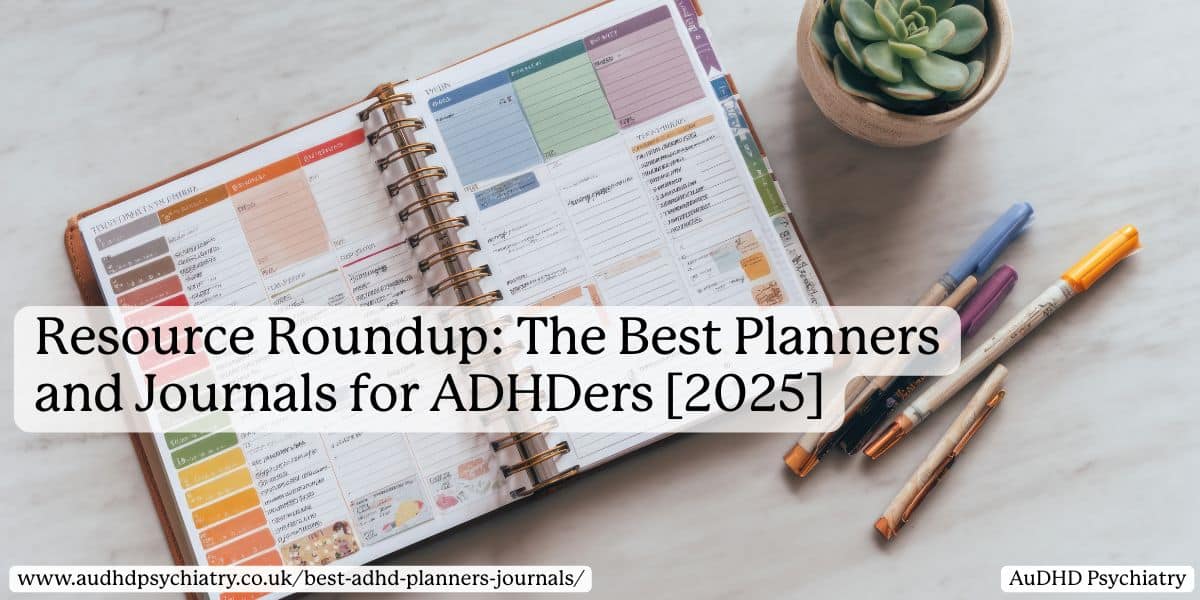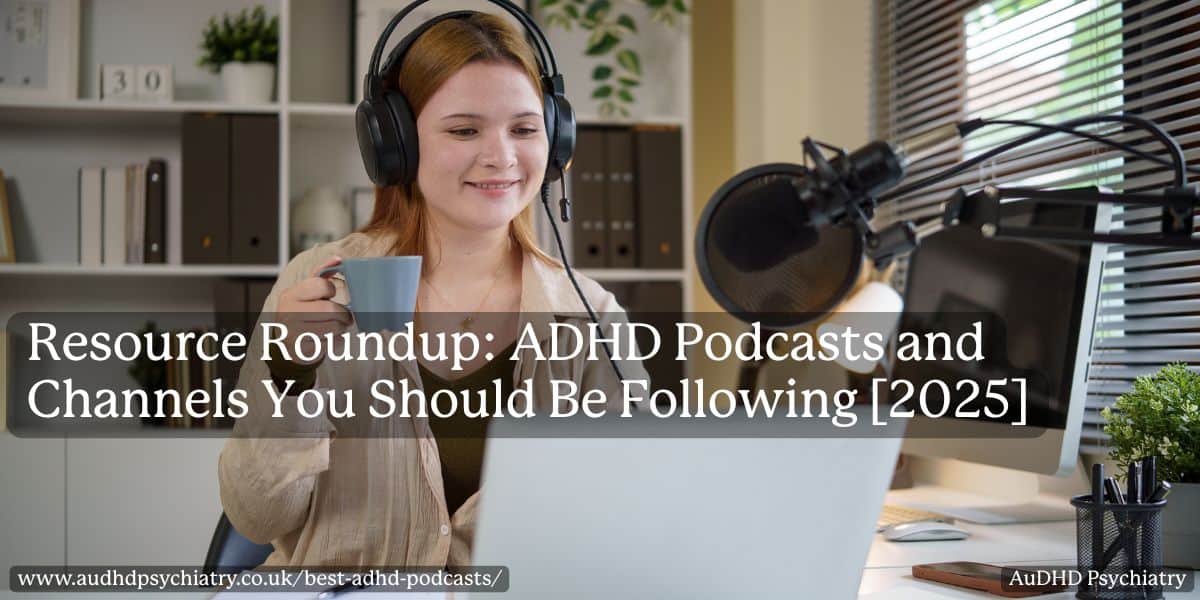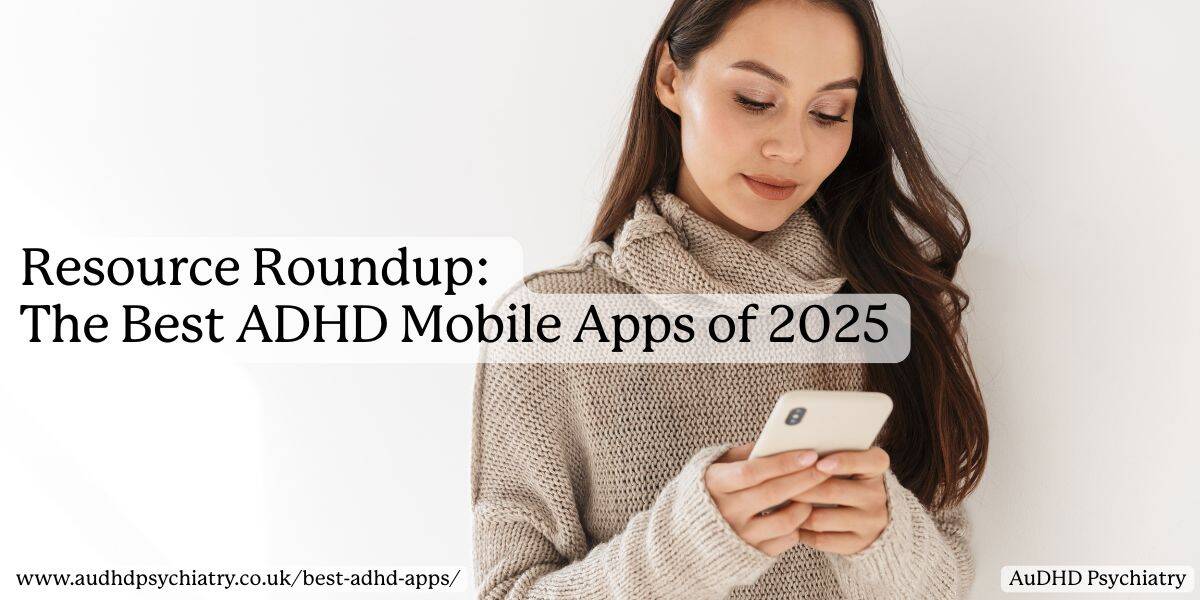
Managing ADHD can be overwhelming, especially when daily routines, deadlines, and responsibilities compete for focus. While ADHD is a neurodevelopmental condition that affects executive functioning, the right digital tools can help turn chaos into structure. In recent years, ADHD apps have become more than just productivity tools. They are lifelines that support mental health, simplify task management, and make everyday life more manageable for ADHD users.
But with hundreds of options on the market, how do you know which are the best ADHD apps for your specific needs? Traditional productivity apps often miss the mark because they are designed with neurotypical users in mind. ADHD brains require apps that minimise distractions, offer customisation, and provide a user experience tailored to the ADHD struggle.
In this roundup, we’ll explore the best ADHD apps across categories, including:
- Guided journaling and planners for structure and reflection
- Digital calendars and to-do apps to manage tasks and deadlines
- Focus timers and body doubling tools for accountability
- Habit trackers and emerging digital therapeutics to build consistency
Whether you’re a student, professional, or parent, these apps can support your specific needs and simplify ADHD symptom management.
What Makes the Best ADHD Apps?
Not all productivity tools are created equal, especially for individuals managing attention deficit hyperactivity disorder (ADHD). Traditional productivity apps often assume a linear workflow — make a list, follow deadlines, complete tasks. But ADHD symptoms affect executive functions like working memory, impulse control, and time management, which makes those “standard” tools harder to use consistently. The best apps for ADHD are designed with these realities in mind, offering features that reduce friction and keep users engaged.
Why “normal” apps fall short
- Complex interfaces can overwhelm ADHD users, leading to app abandonment.
- Too many notifications may distract instead of helping.
- Rigid structures don’t fit the flexible thinking patterns many ADHDers rely on.
Key criteria for effectiveness
The right ADHD app should focus on:
- Simplicity – minimal steps between opening the app and using it.
- Customisation – options to tailor reminders, colours, or task categories to specific needs.
- Low distraction design – uncluttered layouts that encourage focus.
- Engagement features – visual timelines or gamified elements that motivate task completion.
Matching tools to ADHD symptoms
ADHD symptom management often comes down to finding tools that counter executive function struggles. For example:
- Task management apps help with organisation and working memory gaps.
- Scheduling tools reduce time blindness by showing tasks in context.
- Habit trackers support long-term consistency, which is harder for ADHD users to maintain.
The goal isn’t just to get things done but to improve overall user experience and create a system that sticks. Finding the right ADHD app means prioritising usability over complexity, so that support becomes sustainable rather than overwhelming.
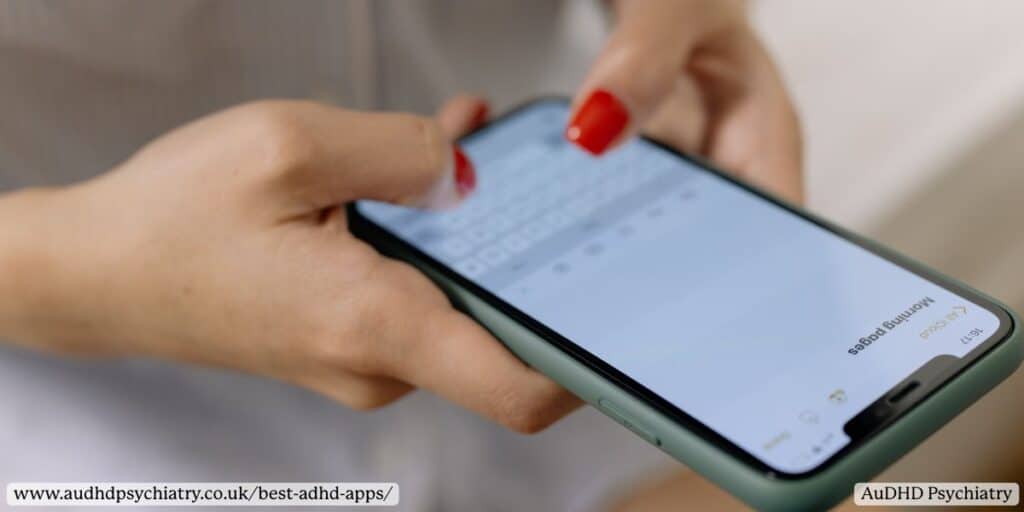
Guided Journaling & Planning Apps
For ADHD users, journaling can be a powerful tool for organisation, emotional regulation, and habit-building. When attention is scattered and ideas come all at once, guided journaling apps provide structure, making it easier to externalise thoughts and set personal goals.
Why Journaling Helps Adhd
- Brain dumps: offload racing thoughts to reduce overwhelm.
- Reflection prompts: build awareness of patterns, energy levels, and triggers.
- Goal-setting: break down ambitions into smaller, trackable steps.
This process is especially helpful for people with ADHD, who often struggle to hold multiple thoughts in working memory at once. A guided journaling app functions as a helpful tool for clarity and consistency.
Top Guided Journaling Apps
Daylio Journal
Ideal for ADHDers who dislike writing long entries. It uses icons, quick notes, and mood tracking so users can log their day in under a minute. Over time, it highlights trends in energy levels and mood, helping spot patterns that affect productivity.
Reflectly
Combines AI prompts with journaling. ADHD users benefit from its guided questions that reduce decision fatigue. Reflectly also tracks streaks, which motivates habit-building. Its downside is that too many features may distract some users.
Stoic
Integrates CBT-inspired exercises and mindfulness practices with journaling. ADHD users who struggle with emotional regulation may find Stoic especially helpful for stress relief and self-reflection.
Journey
Offers a more traditional journaling interface with reminders and cross-device syncing. This makes it a helpful tool for ADHDers who want consistency across their mobile devices.
Why these apps matter
Guided journaling is about mental health support, habit formation, and creating space for reflection. These apps work because they reduce barriers: no blank pages, no overwhelming choices, just simple entry points that build lasting habits.
For more digital and offline supports, explore our ADHD Resources & Tools.
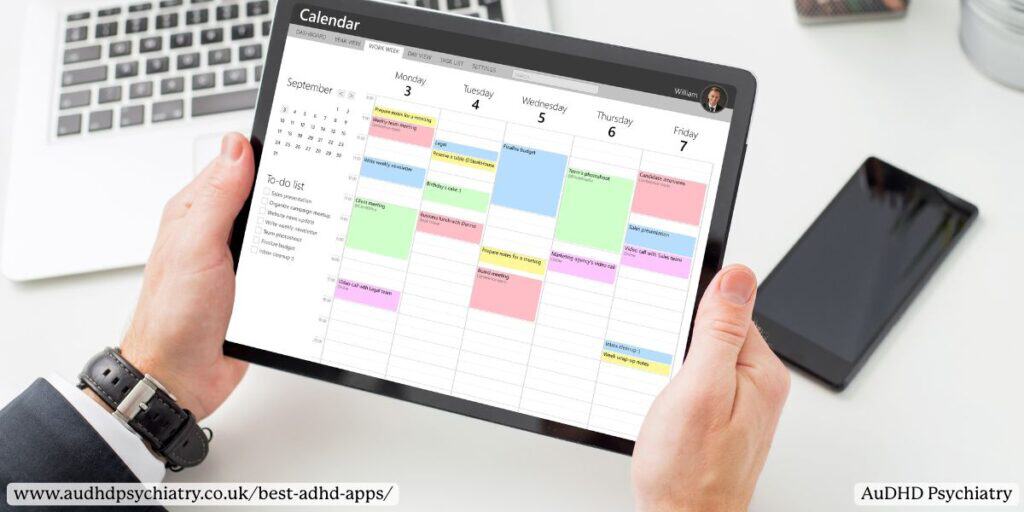
Digital Planners & Paper Planners
For ADHD users, planners can be lifelines for structuring a scattered mind. While digital planners and paper planners both offer benefits, the best ADHD apps integrate flexibility, visual support, and reminders that align with ADHD needs.
Why Planners Matter for ADHD
ADHD often disrupts daily routines, making it hard to keep track of appointments, task lists, or long-term goals. A good planner helps externalise memory and reduce decision fatigue. However, choosing whether you want to use a digital or a paper planner depends on ease of use, customisation options, and personal workflow.
Digital Planner Apps
Sunsama
A daily planner that blends task management and calendar views. It’s especially helpful for ADHDers who benefit from a visual timeline of their day. Sunsama encourages realistic planning by limiting how many tasks you can schedule, preventing overwhelm. Its integrations with Google Calendar and Trello make it versatile across mobile devices.
Tiles
Designed for visual thinkers, xTiles lets users organise notes, links, and tasks into tiles. For ADHD users, this is powerful because it mirrors how the brain jumps between ideas. The drag-and-drop interface makes task lists less intimidating and highly customisable.
Todoist (with planner view)
While known as a to-do app, Todoist’s planner features allow users to structure tasks into projects with recurring reminders. Its ease of use makes it an accessible entry point for ADHDers who want simplicity without losing structure.
Paper Planners
Some ADHD users prefer the tactile experience of paper planners. Writing things down can strengthen memory and provide a break from mobile devices. Colour-coding, stickers, and highlighters can turn paper planners into visual systems that appeal to ADHD brains. The downside: missed reminders and lack of integration with digital tools.
Finding What Works
There’s no single right choice. Some ADHD users thrive with apps like Sunsama, while others need the sensory input of paper. Many combine both: using paper for brainstorming and a digital planner for reminders.

Digital Calendars & Scheduling Tools
Calendars are essential for ADHDers who struggle with time blindness – the difficulty of sensing how much time has passed or how long a task will take. The best apps for ADHD provide visual and auditory cues that make everyday tasks easier to track.
Google Calendar
One of the most popular digital calendars/scheduling tool, Google Calendar, helps ADHD users break down daily tasks into manageable chunks. Key features include:
- Colour coding for different types of events (work, personal, self-care).
- Due dates and reminders that can ping multiple times before an event.
- Cross-platform sync across phones, tablets, and desktops.
Its free plan makes it widely accessible, but the sheer number of options can overwhelm beginners. Learning its features one at a time may help with this.
Apple iCal
For iOS users, iCal integrates seamlessly into Apple’s ecosystem. ADHDers benefit from its all-day reminders and the ability to add travel time to events. It’s less feature-heavy than Google Calendar, which makes it easier to navigate for those who prefer simplicity.
Physical Calendars
Some ADHD users still rely on large wall calendars or desk planners. These provide a constant visual reminder of important tasks and deadlines, which can be useful for households or families managing ADHD together.
Why Scheduling Apps Work
Digital calendars reduce reliance on working memory and provide external accountability. ADHDers who struggle with everyday tasks can use repeating events to automate routines like “take medication” or “submit report.”
For additional strategies, combining calendars with techniques like the Pomodoro timer can further improve task management. See The Pomodoro Technique for ADHD: Does It Really Work? for practical tips.
To-Do List Apps for ADHD
For ADHD users, to-do apps are about simplifying chaos, breaking down long tasks, and giving structure to a day that might otherwise feel overwhelming. The best ADHD apps include powerful features that go beyond a standard checklist, helping users actually complete tasks without burning out.
TickTick
TickTick combines a to-do list app with calendar integration and habit tracking. ADHD users benefit from its detailed to-do lists, which can be broken down into subtasks. For example, “Write report” can become smaller steps like “Draft intro,” “Add research,” and “Proofread.” The built-in Pomodoro timer helps with time blocking, making it easier to focus on long tasks without drifting off. Its user-friendly interface makes it approachable even for people new to productivity tools.
Trello
Trello uses boards, lists, and cards to give ADHDers a visual task management system. Each card can hold checklists, due dates, and attachments. For people who struggle with clutter, this powerful tool turns abstract goals into concrete steps. ADHD users often use Trello to manage group projects or household chores because tasks can be shared with others, adding accountability.
Amazing Marvin
Amazing Marvin is highly customisable, making it an excellent fit for ADHDers with specific needs. Its flexible structure lets users test out different productivity systems, from time blocking to task prioritisation. Some may find the range of options overwhelming, but for those who like experimenting with powerful features, Marvin can become a game-changer.

Sunsama
Sunsama shines as both a planner and to-do app. It encourages users to plan daily tasks realistically by limiting the number you can schedule. For ADHDers prone to overcommitting, this design reduces overwhelm and supports task management that feels achievable. Its integrations with apps like Slack and Google Calendar make it a central hub for daily organisation.
Twos
Twos is a newer to-do list app that emphasises simplicity. Instead of overwhelming users with menus and tabs, it presents a single daily list where you can jot down thoughts, reminders, or tasks. For ADHD users who struggle with clutter, this user-friendly interface reduces distraction while still giving enough structure to move through the day.
Finch
Finch gamifies task completion by turning to-dos into the growth of a virtual pet. For ADHDers who struggle with motivation, this to-do app adds emotional reward to completing daily tasks. The app also integrates powerful features like mood check-ins and streaks, helping users connect their habits with mental wellbeing.
Remember the Milk
This app is lightweight but effective, especially for people juggling many everyday tasks. Its smart lists and natural-language input make it fast to add tasks like “email John tomorrow.” For ADHDers who benefit from simplicity but still want customisation options, Remember the Milk is a solid choice.
Due
Due focuses on reminders rather than long task lists. Its standout feature is persistent notifications — alerts keep buzzing until you mark the task as complete. For ADHDers prone to forgetting important tasks, this can prevent missed deadlines.
Brili
Designed with ADHD in mind, Brili is both a to-do list app and a routine builder. It helps break long tasks into smaller steps with time limits, making it ideal for children, teens, and adults alike. Its user-friendly interface is particularly helpful for those new to productivity apps.
Why To-Do Apps Work for ADHD
Unlike generic productivity apps, ADHD-friendly tools account for short attention spans, poor working memory, and motivation struggles. They provide structure without rigidity, letting users adapt to their real-life needs.
Focusmate & Body Doubling Tools
Body doubling is one of the most effective ADHD management tools. The idea is simple: having someone else “with you” during a task makes it easier to stay focused, avoid distractions, or beat task paralysis. For many ADHD users, apps that replicate this accountability are more effective than trying to rely on willpower alone.
Focusmate Overview
Focusmate connects users with real people for virtual work sessions. You book a slot, show up on video, and work silently alongside your partner. The safe space this creates helps with motivation, reduces procrastination, and keeps sessions grounded in real life. Many ADHDers report higher productivity when they know someone else is present.
Alternatives and Accountability Apps
Other platforms like Caveday or Flow Club offer similar structures, pairing accountability with community. These ADHD tools for adults are flexible, allowing short bursts or extended sessions depending on energy levels.
Why It Works
Body doubling reduces the isolation that often comes with ADHD. It’s a helpful tool for turning overwhelming projects into manageable work blocks.

Pomodoro & Timer-Based Tools
Time management is one of the biggest ADHD struggles. Timer-based apps help break work into short, focused sessions that prevent burnout and make tasks feel more approachable. The Pomodoro timer method, in particular, has become a favourite to users because it combines structure with built-in rest.
Focus Keeper
Focus Keeper is a clean and simple app that applies the Pomodoro principle of 25-minute work sessions followed by 5-minute breaks. Its range of features includes progress tracking and session customisation, making it ideal for people who need flexibility without distraction.
Forest App
Forest turns focus into a game. Every time you stay on task, you grow a virtual tree; if you leave the app early, the tree withers. This gamified approach appeals to ADHD users who benefit from visual rewards. Over time, you build a digital forest, making progress feel tangible.
Other Timer Apps
Options like Be Focused or Tide add focus music, custom intervals, and calming visuals. These small extras help sustain attention and reduce overwhelm during long tasks.
Notes & Organisation Tools
For ADHD users, keeping track of thoughts, tasks, and ideas is often as challenging as completing them. A powerful note-taking app can bridge that gap, helping capture important notes in the moment and organise them for later use. These tools reduce reliance on memory and provide additional features that make staying on top of daily life easier.
Apple Notes
Pre-installed on iOS, Apple Notes is a user-friendly option for quick lists, reminders, or attaching media to a text file. Its seamless sync across devices makes it a reliable everyday tool.
xTiles
xTiles takes visual planning further with drag-and-drop boards, perfect for ADHDers who think in patterns and connections. It offers an intuitive app store integration and works as both a workspace and an idea organiser.
Scrintal
Scrintal combines mind mapping and note-taking, making it great for brainstorming. Its visual aids help ADHD users link concepts, which supports problem-solving and creative projects.
Sticker Book
A lighter option, Sticker Book adds playfulness by turning notes into collections. For some, this sense of fun makes organisation feel less like work.
For more on tackling misconceptions around productivity, see ADHD or Laziness?.
ADHD Apps for Routine, Habits & Daily Management
Brili
Brili is designed with ADHD brains in mind, offering visual schedules and step-by-step task guidance. Its routine builder breaks big transitions like getting ready for school or winding down for bed into small, achievable actions. The visual timeline reduces overwhelm while automated reminders encourage independence for both kids and adults.
Habitica
Habitica gamifies routines by turning daily tasks into role-playing quests. Completing chores or self-care builds rewards, while skipping them results in in-game penalties. This playful format motivates ADHD users who respond well to external accountability and immediate feedback, making it an excellent choice for building habits and improving mental health.
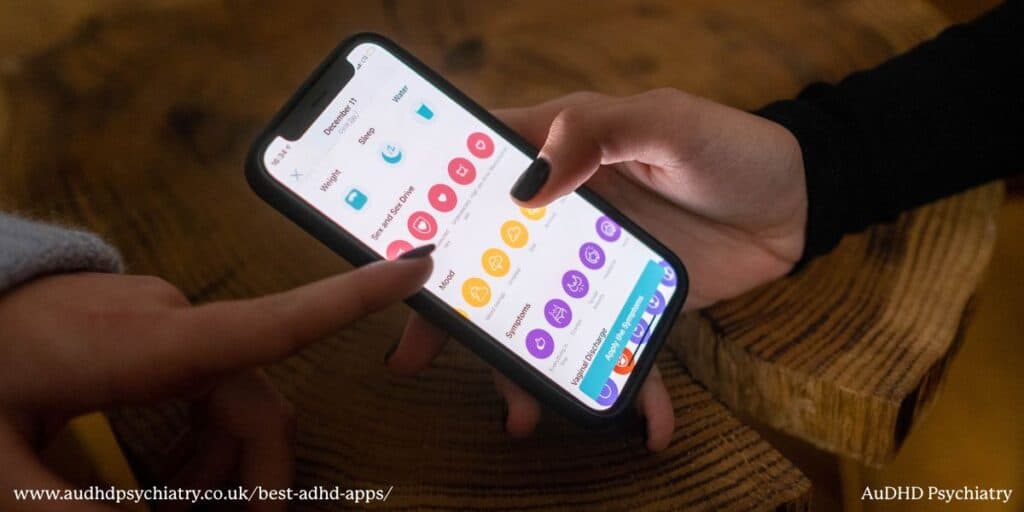
Other Habit Trackers
Apps like Streaks and Loop Habit Tracker keep things simple, focusing on healthy habits and consistency. Some include mood check-ins and data visualisation, helping users see long-term progress. When paired with therapy, especially cognitive behavioural therapy (CBT), these apps can strengthen routines and reduce the ADHD struggle with structure.
Fidget Apps for Focus
Fidgeting helps many people with ADHD regulate their energy and attention throughout the day. While physical tools like stress balls and tangles remain popular, digital fidget apps are becoming an excellent choice for discreet, portable sensory support. They mimic the soothing effects of tactile play while fitting right into your mobile device.
Antistress – Relaxing Games
Available on both iOS and Android, Antistress offers a collection of calming mini-games, from bubble wrap popping to wood carving. It’s a helpful tool for brain dumps and quick breaks when stress levels rise.
Fidget Spinner 3D
This app recreates the sensory satisfaction of spinning a real fidget toy. You can choose from different spinner designs, track rotations, and enjoy the repetitive motion that can help with impulse control and focus during work sessions.
Sensory App Suite
Originally designed for neurodiverse individuals, this set of apps offers visual and tactile experiences like moving patterns, textures, and interactive shapes. It’s a great tool for daily use, especially for younger ADHD users who need engaging but non-distracting options.
By combining these apps with occasional use of physical fidgets, ADHD users can create a flexible system for managing restlessness and staying productive on a daily basis.
Choosing the Right ADHD App for You
With so many ADHD apps available, finding the right one can feel overwhelming. The best approach is to match each app’s strengths to your specific challenges. For example, if time blindness is your main concern, a digital calendar with recurring reminders may help. If forgetfulness is the issue, a to-do list app with alarms and notifications can make sure nothing slips through the cracks.
When comparing apps, consider:
- Customisation Options – Can you adjust layouts, reminders, or visuals to suit your style?
- Ease of Use – ADHD users benefit from simple, clear interfaces rather than cluttered designs.
- Integration – Does it work across devices and sync with tools you already use?
- Budget and Value – Many offer free versions, but paid upgrades may include powerful features worth the cost.
It’s also important to avoid “app fatigue.” Using too many tools at once can become overwhelming. Instead, trial a few options and commit to those that best fit your real life needs.
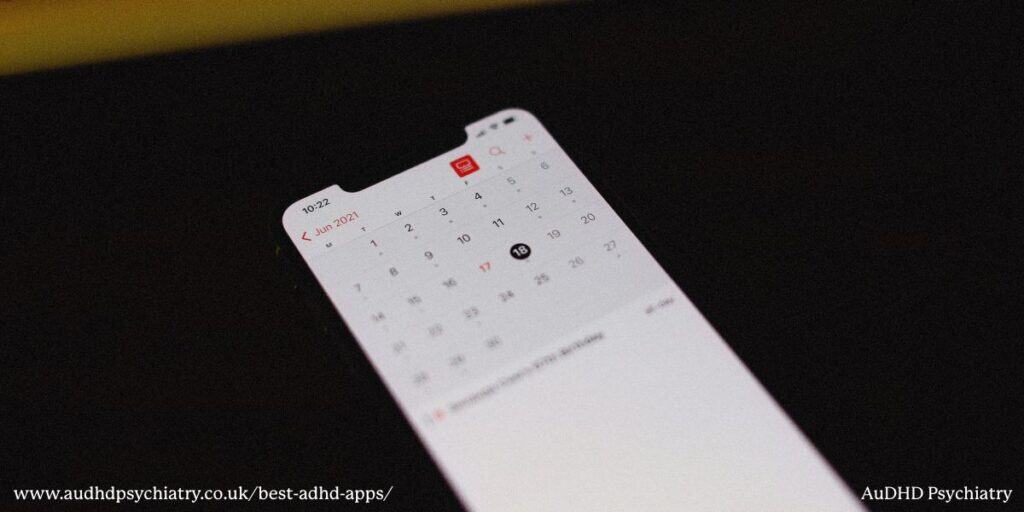
Punctuality, Time Blindness, and Next Steps
Time blindness is one of the most common ADHD struggles. It’s a symptom that makes it difficult to judge the passing of time. Apps can help by turning time into something visual, structured, and harder to ignore. Tools like timers, vibrating reminders, and visual countdowns can act as anchors for everyday tasks, helping you stay on track with your deadlines, due dates, and daily life routines.
Still, no app can replace professional guidance when needed. For many, the most effective treatment combines ADHD medication with practical strategies like digital reminders. If you find that even the best apps aren’t enough, consider seeking medical advice.
The first step can simply be picking one or two tools, test them in real situations, and building from there. Apps are not quick fixes, but paired with structured support, they can transform how you manage time and commitments.
Find What Works for You
At the end of the day, the best ADHD apps are not about finding the “perfect” tool, but choosing the ones that truly work for your brain. Each person’s ADHD symptom management looks different. Some thrive with detailed to-do lists, others prefer visual timers or simple habit trackers. Apps are supports, not solutions in themselves.
Remember, while technology is powerful, it works best alongside professional support. If you’re considering whether your struggles might be ADHD, the first step is an accurate assessment. From there, clinicians can recommend a holistic plan that may include apps, therapy, coaching, or ADHD medication.
Take action today and book your personalised assessment and explore how the right combination of strategies, tools, and professional guidance can help you thrive.
References:
Why does ADHD still not get the respect it deserves? By Alison Brazier, Ph.D. – CADDAC. (n.d.). CADDAC. https://caddac.ca/why-does-adhd-still-not-get-the-respect-it-deserves-by-alison-brazier-ph-d/
You Might Also Like
Contact Us
We’re here to help. Reach out and we’ll get back to you as soon as possible.
Contact Us
We’re here to help. Reach out and we’ll get back to you as soon as possible.

